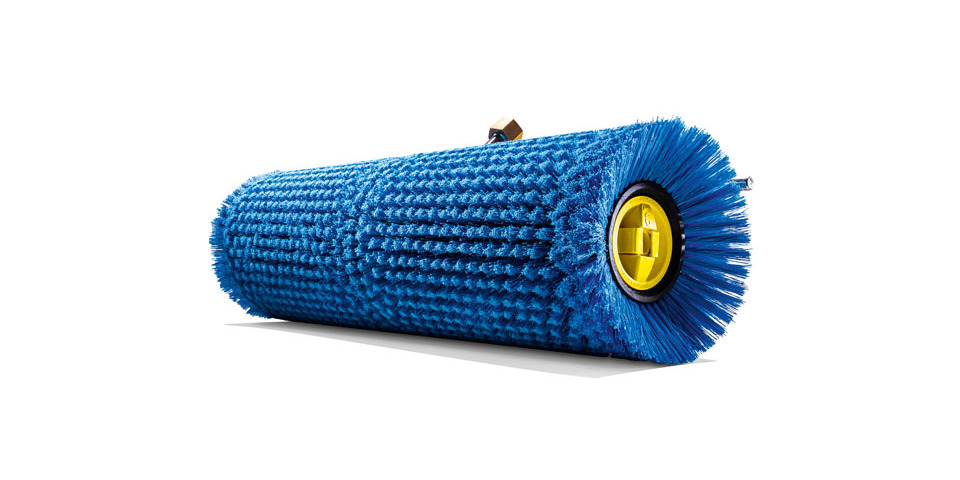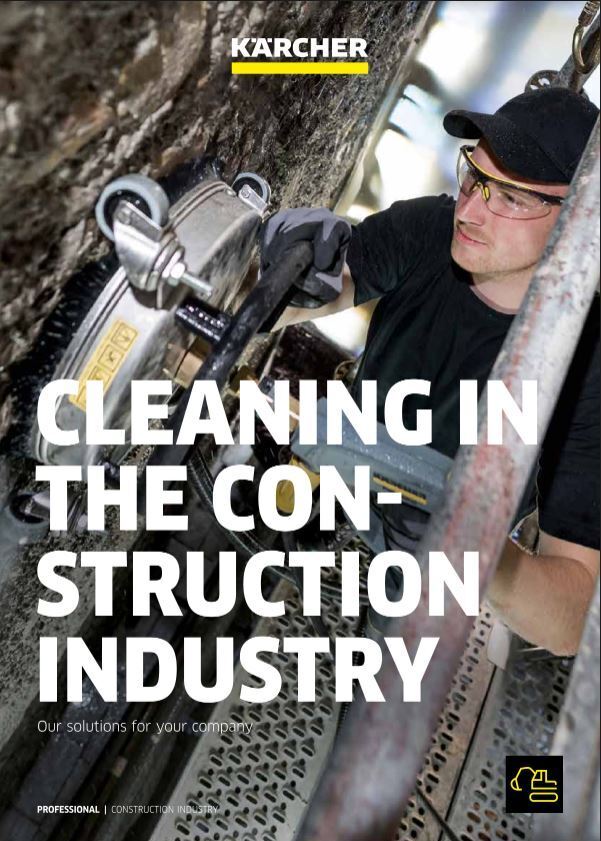Commercial window cleaning
Glass facades impart a transparent outer shell to buildings and play a major role in modern architecture. Different buildings have different types of glass, and it’s important to clean them both gently and efficiently. For post-build cleaning, scratch-sensitive glass surfaces such as tempered glass must be handled with particular care. For standard cleans, it is common practice to use purified water. This type of water removes dirt without the need for additional chemicals and unlike water from the tap, it dries without leaving behind limescale and other hard water stains.

Window glazing: different types, different attributes
There’s more to glass than meets the eye. Different types of glass have different characteristics that need to be considered when cleaning. While tempered glass is exceptionally durable and can withstand extreme temperatures, it is prone to scratches. To avoid scratching tempered glass, it’s best not to use a glass scraper when cleaning windows made with this glass type. Laminated glass, which can be made with tempered glass or annealed glass, consists of two or more glass panes bonded together with a plastic resin, most commonly with a polyvinyl butyral (PVB) interlayer. Should the glass break, the individual shards of glass remain attached to the resin, preventing the dispersal of sharp-edged splinters.
Solar control glass is a type of glass with a dielectric coating that contains semiconducting metal-oxide materials. This additional layer reduces glare and prevents indoor areas from overheating. Due to the coating, the manufacturer’s instructions must be followed when cleaning such windows, with particular attention being given to the coated side.
Tip 1 – Safety compliance markings can be used to identify different glass types:
The safety code EN12150 is used for tempered glass and EN14449 for laminated glass.
Tip 2 – Be cautious with solar control window film:
Some window glazings have solar control film, which in most cases is visible or easy to detect. When cleaning such windows, it’s important to observe the manufacturer’s instructions. Under no circumstances should a glass scraper be used on the side with film as this can damage the film.
What to pay attention to during a post-build clean
Facades with large window surfaces are often incorporated into the design of buildings to make them more aesthetically pleasing. As glass can easily be damaged during the cleaning process, it is of the utmost importance to protect glass facades from coarse dirt during the construction phase.
Methods and techniques for commercial window cleaning
Should pure water cleaning prove ineffective in the removal of stubborn dirt and stains, traditional cleaning equipment is generally used. This includes scrubbers, squeegees and glass scrapers as well as ladders or scaffolding. While glass scrapers are normally used to remove adhesive residues, solvent-based cleaners should be used to remove such residue from scratch-sensitive glass, such as tempered glass and some types of laminated glass. When using such cleaners, special attention must be given to components that could be damaged by such chemicals, for example, plastic frames.

Tip – Plaster stains on glass surfaces:
It is often not possible to remove plaster stains from tempered glass without causing damage to the glass. For this reason, plaster stains are better left to an insurance company.
What to pay attention to during routine cleans
Glass facades are exposed to a myriad of elements including fine dust, rain dust, Sahara dust, overgrowth and traces of weathering. In order to ensure that a building’s glass surfaces retain their architectural appeal, the external-facing side of glass facades should regularly be cleaned, ideally at least twice a year.
Using pure water as your cleaner
While routine glass facade cleaning can be carried out using window cleaning detergents, working with pure water has established itself as the method of choice for the removal of water-soluble impurities. Using pure water as your cleaner reduces the need for ladders and scaffolding as cleaning can be done from the ground with water-fed poles. Moreover, it doesn’t leave any lime stains when it dries, making stripping unnecessary and significantly reducing the amount of work required. By replacing cleaning detergents that contain surfactants with pure water, the glass surface is also less likely to attract dirt and other grime.
There are currently two systems available on the market: reverse osmosis and mixed bed resin filters. With reverse osmosis, a membrane is used to remove mineral components from the water. With this type of filtering process, approximately 50 percent of the water produced is wastewater. Alternatively, you can use a DI vessel with ion exchange resin. While this method doesn’t produce any wastewater, the resin must be regenerated on a regular basis.

Tip – Surfactant residue:
If a facade has previously been treated with cleaning detergent, there may still be surfactant residues in the seals. This may require additional work during the first 2 or 3 cleans, but afterwards, cleaning with pure water will reduce the overall amount of work considerably.
Techniques and methods for routine cleans
As working with pure water allows for streak-free drying, the only tools needed for this method of cleaning are water-fed telescopic lances and flocked-bristle brushes. Alternatively, a high-pressure cleaner can be used in combination with a rotating wash brush attachment for a more efficient clean.
When selecting a telescopic lance, you should have the option to work with low, medium, or high pressures. This allows for flexibility when cleaning other types of surfaces. A rotating base element reduces lateral forces, making work less strenuous. In addition, backpack systems ensure that the weight of the pole and any attachments is distributed over your entire torso, significantly reducing the carrying load for your arms.

Tip 1 – Wear prism glasses:
To prevent neck strains caused from looking upwards for a prolonged period of time, prism glasses should be used while cleaning tall buildings. With 2 prisms, the glasses allow the wearer to look up to see where they are cleaning without them having to tilt their head back.
Tip 2 – Use pumice powder to remove glass corrosion:
If glass looks dull, glass corrosion is usually the culprit. This occurs, for example, when water frequently sits on a slanted glass surface for long periods of time. This strips the glass of certain components, causing the surface to lose its transparent quality. Depending on the severity, this can be remedied with pumice powder or cleaning products specially formulated for glass facades.












